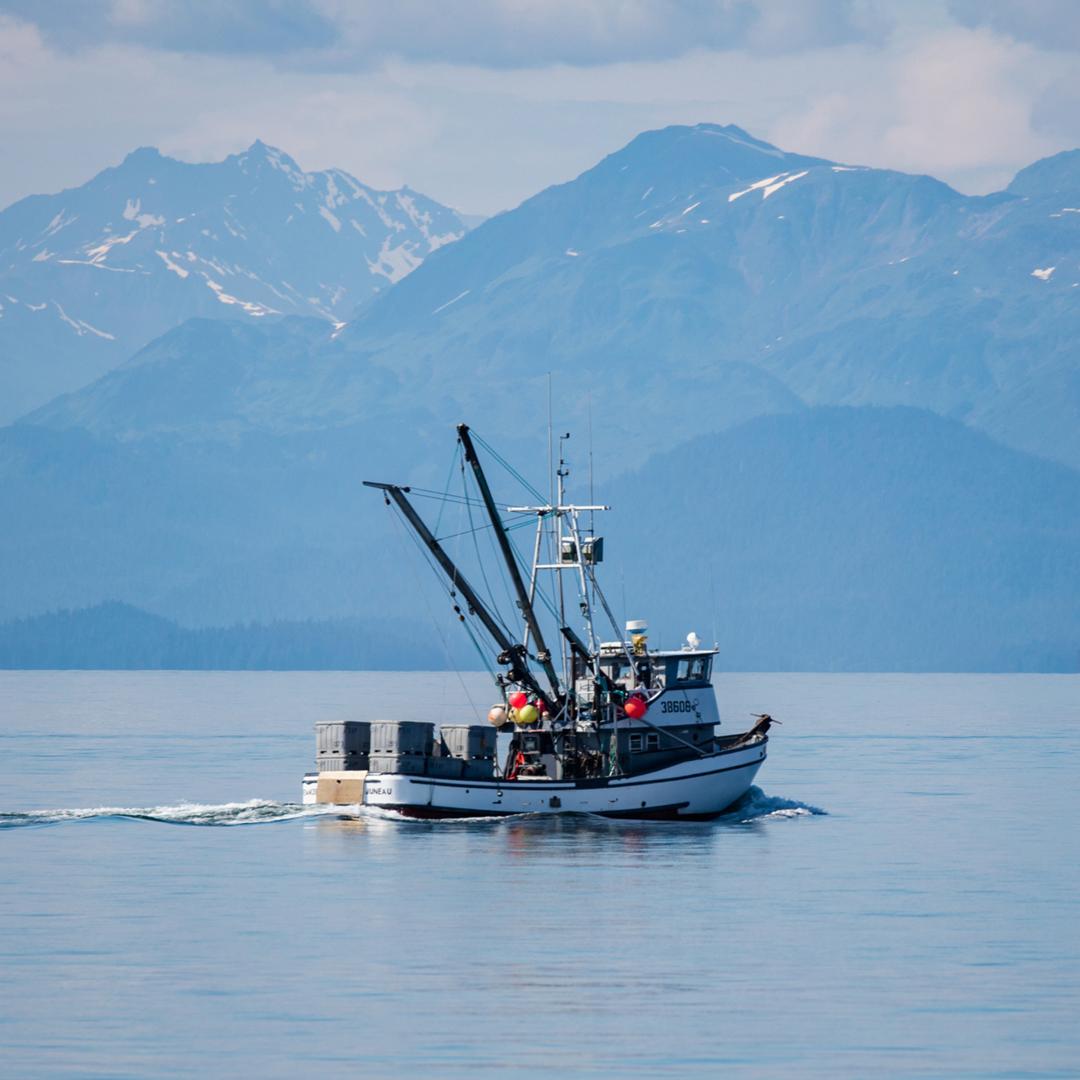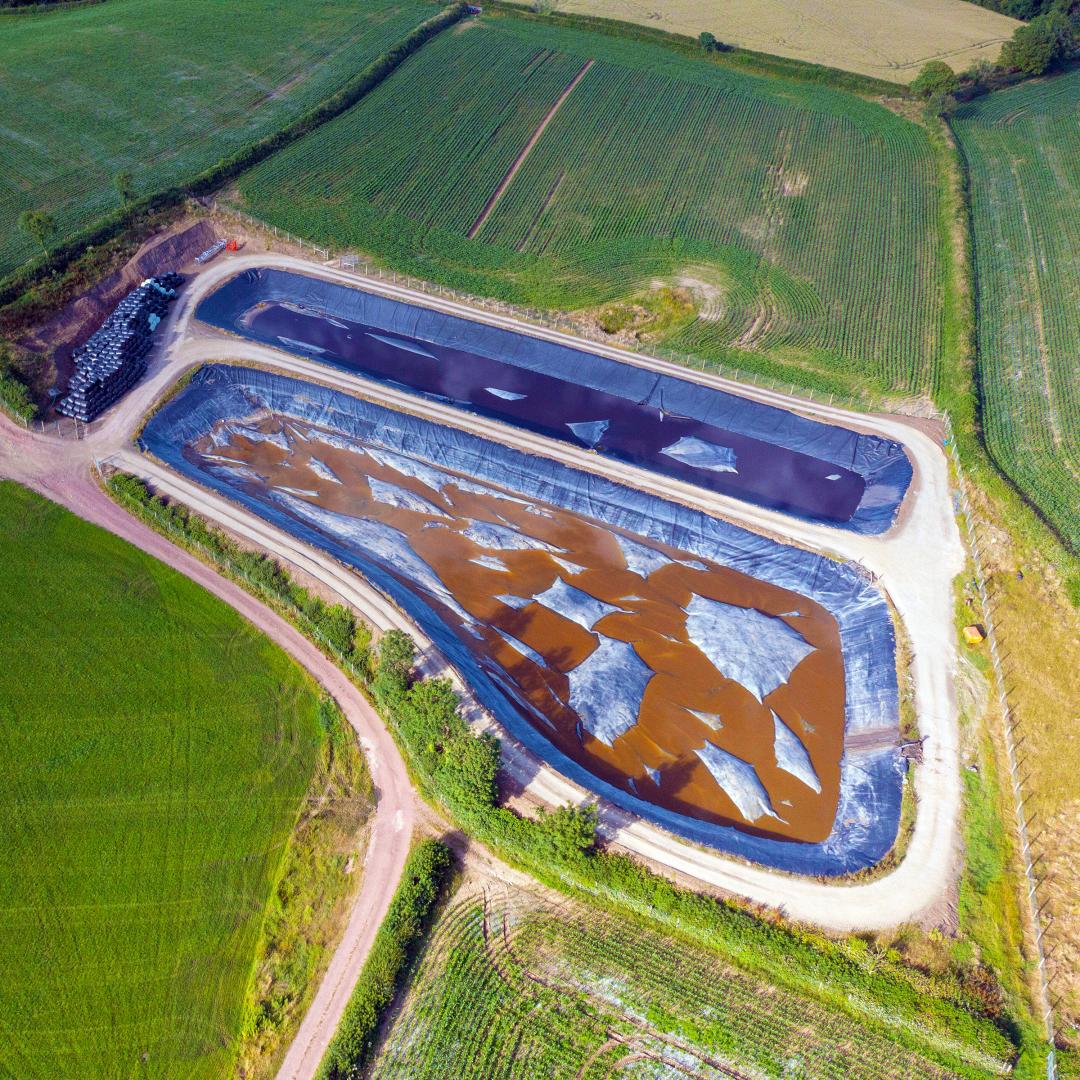What is our assessment?
Our analysis concludes that, despite its limited global impact for reducing emissions, Reduce Overfishing is a “Worthwhile” climate solution that has other important benefits for ecosystem health and long-term food security.
This solution can still help mitigate climate change but does not meet the scale to be considered a major climate solution.


Reduce Overfishing refers to the use of management actions that decrease fishing effort and therefore cut CO₂ emissions from fishing vessel fuel use on overfished stocks. Advantages include the potential to replenish depleted fish stocks, support ecosystem health, and enhance long-term food and job security. Disadvantages include the short-term reductions in fishing effort needed to allow systems to recover, which could impact local livelihoods and economies. While these interventions are not expected to reach globally meaningful levels of emissions reductions (>0.1 Gt CO₂‑eq/yr ), we conclude that Reduce Overfishing is “Worthwhile” with important ecosystem and social benefits.
Our analysis concludes that, despite its limited global impact for reducing emissions, Reduce Overfishing is a “Worthwhile” climate solution that has other important benefits for ecosystem health and long-term food security.
| Plausible | Could it work? | Yes |
|---|---|---|
| Ready | Is it ready? | Yes |
| Evidence | Are there data to evaluate it? | Yes |
| Effective | Does it consistently work? | Yes |
| Impact | Is it big enough to matter? | No |
| Risk | Is it risky or harmful? | No |
| Cost | Is it cheap? | ? |
Reducing overfishing lowers fuel use and CO₂ emissions from wild capture fishing vessels by reducing fishing effort on overfished stocks. This is typically achieved through management actions, such as seasonal closures, gear restrictions, and catch limits. Fishing effort, whether measured as the hours spent fishing or distance traveled, is generally proportional to fuel use. In addition to immediate reductions in emissions, reducing overfishing can allow overfished stocks to recover, which can lead to reduced future emissions since fuel use is lowered when fish are easier to catch and harvested sustainably.
Reducing fishing effort in locations with depleted and overfished wild fish stocks is expected to reduce emissions from fishing vessels. When stocks are overfished, fishers must exert additional effort, traveling further and/or searching longer to make the same catch, which increases fuel use and CO₂ emissions. Reducing overfishing through management actions, such as harvest control rules, gear restrictions, seasonal closures, stronger enforcement of existing regulations, and establishment of marine protected areas, can help fish stocks recover. Other policy tools, such as reducing harmful fuel subsidies that currently enable many otherwise unprofitable fishing fleets, are also likely to result in lower fuel use and CO₂ emissions. Healthy fish stocks can be caught with lower fishing effort, translating to future fuel savings and reduced CO₂ emissions. Global estimates suggest that reductions in overfishing could avoid up to 0.08 Gt CO₂‑eq/yr, representing almost half of the entire capture fisheries sector's annual emissions (0.18 Gt CO₂‑eq/yr ).
Currently, overfishing affects more than 35% of global wild marine fish stocks, increasing by 1%, on average, every year. Reducing overfishing not only lowers fuel use and emissions but also allows overfished stocks to recover. Healthy fish stocks strengthen marine food webs and contribute to ecosystem resilience and biodiversity. Overfishing has widespread consequences for diverse marine ecosystems, such as kelp forests, where declines in fish have led to overgrazing of the kelp by sea urchins. Over time, management interventions will also likely improve the sustainability and long-term reliability of coastal livelihoods and food security by supporting sustainable fisheries.
Policy and management tools for reducing overfishing and, by extension, fishing-related emissions come with some challenges. For instance, management measures or legal protections may not be fully effective if implementation or enforcement is weak. Management and enforcement can be particularly challenging on the high seas, where jurisdiction is limited or shared across many nations, and where illegal, unreported, and unregulated fishing can be widespread. Even when effective, fish stock recovery can take years to decades, and the costs and trade-offs are unlikely to be evenly distributed across fishing fleets. In the short term, efforts to reduce overfishing could create economic challenges for small-scale fishers who may have fewer resources and less capacity to adapt to management restrictions.
Andersen, N. F., Cavan, E. L., Cheung, W. W., Martin, A. H., Saba, G. K., & Sumaila, U. R. (2024). Good fisheries management is good carbon management. npj Ocean Sustainability, 3(1), 17. Link to source: https://doi.org/10.1038/s44183-024-00053-x
Bastardie, F., Hornborg, S., Ziegler, F., Gislason, H., & Eigaard, O. R. (2022). Reducing the fuel use intensity of fisheries: through efficient fishing techniques and recovered fish stocks. Frontiers in Marine Science, 9, 817335. Link to source: https://doi.org/10.3389/fmars.2022.817335
Food and Agriculture Organization of the United Nations. (2018). The state of world fisheries and aquaculture. Food and Agriculture Organization of the United Nations. Link to source: https://openknowledge.fao.org/handle/20.500.14283/i9540en
Food and Agriculture Organization of the United Nations. (2024). The State of World Fisheries and Aquaculture 2024 – Blue Transformation in action. Food and Agriculture Organization of the United Nations. Link to source: https://openknowledge.fao.org/handle/20.500.14283/cd0683en
Gaines, S. D., Costello, C., Owashi, B., Mangin, T., Bone, J., Molinos, J. G., ... & Ovando, D. (2018). Improved fisheries management could offset many negative effects of climate change. Science Advances, 4(8), eaao1378. Link to source: https://doi.org/10.1126/sciadv.aao1378
Gephart, J. A., Henriksson, P. J., Parker, R. W., Shepon, A., Gorospe, K. D., Bergman, K., ... & Troell, M. (2021). Environmental performance of blue foods. Nature, 597(7876), 360-365. Link to source: https://doi.org/10.1038/s41586-021-03889-2
Gulbrandsen, O. (2012). Fuel savings for small fishing vessels. Food and Agriculture Organization of the United Nations. Link to source: https://www.fao.org/4/i2461e/i2461e.pdf
Hilborn, R., Amoroso, R., Collie, J., Hiddink, J. G., Kaiser, M. J., Mazor, T., ... & Suuronen, P. (2023). Evaluating the sustainability and environmental impacts of trawling compared to other food production systems. ICES Journal of Marine Science, 80(6), 1567–1579. Link to source: https://doi.org/10.1093/icesjms/fsad115
Hoegh-Guldberg, O., Caldeira, K., Chopin, T., Gaines, S., Haugan, P., Hemer, M., ... & Tyedmers, P. (2023). The ocean as a solution to climate change: five opportunities for action. In The blue compendium: From knowledge to action for a sustainable ocean economy (pp. 619–680). Cham: Springer International Publishing. Link to source: https://oceanpanel.org/wp-content/uploads/2023/09/Full-Report_Ocean-Climate-Solutions-Update-1.pdf
Johnson, T. (2009). Fuel-Saving Measures for Fishing Industry Vessels. University of Alaska Fairbanks, Alaska Sea Grant Marine Advisory Program. Link to source: https://alaskaseagrant.org/wp-content/uploads/2022/03/ASG-57PDF-Fuel-Saving-Measures-for.pdf
Ling, S. D., Johnson, C. R., Frusher, S. D., & Ridgway, K. (2009). Overfishing reduces resilience of kelp beds to climate-driven catastrophic phase shift. Proceedings of the National Academy of Sciences, 106(52), 22341–22345. Link to source: https://doi.org/10.1073/pnas.0907529106
Machado, F. L. V., Halmenschlager, V., Abdallah, P. R., da Silva Teixeira, G., & Sumaila, U. R. (2021). The relation between fishing subsidies and CO2 emissions in the fisheries sector. Ecological Economics, 185, 107057. Link to source: https://doi.org/10.1016/j.ecolecon.2021.107057
Parker, R. W., Blanchard, J. L., Gardner, C., Green, B. S., Hartmann, K., Tyedmers, P. H., & Watson, R. A. (2018). Fuel use and greenhouse gas emissions of world fisheries. Nature Climate Change, 8(4), 333–337. Link to source: https://doi.org/10.1038/s41558-018-0117-x
Pauly, D., Christensen, V., Dalsgaard, J., Froese, R., & Torres Jr, F. (1998). Fishing down marine food webs. Science, 279(5352), 860–863. Link to source: https://doi.org/10.1126/science.279.5352.860
Ritchie, H., & Roser, M. (2021). Fish and overfishing. Our World in Data. Link to source: https://ourworldindata.org/fish-and-overfishing
Sharma, R., Barange, M., Agostini, V., Barros, P., Gutierrez, N.L., Vasconcellos, M., Fernandez Reguera, D., Tiffay, C., & Levontin, P., (Eds.). (2025). Review of the state of world marine fishery resources – 2025. FAO Fisheries and Aquaculture Technical Paper, No. 721. Rome. FAO. Link to source: https://doi.org/10.4060/cd5538en
Sumaila, U. R., Ebrahim, N., Schuhbauer, A., Skerritt, D., Li, Y., Kim, H. S., ... & Pauly, D. (2019). Updated estimates and analysis of global fisheries subsidies. Marine Policy, 109, 103695. Link to source: https://doi.org/10.1016/j.marpol.2019.103695
Sumaila, U. R., & Tai, T. C. (2020). End overfishing and increase the resilience of the ocean to climate change. Frontiers in Marine Science, 7, 523. Link to source: https://doi.org/10.3389/fmars.2020.00523
United Nations Global Compact & World Wildlife Fund. (2022). Setting science-based targets in the seafood sector: Best practices to date. Link to source: https://unglobalcompact.org/library/6050
World Bank. (2017). The sunken billions revisited: Progress and challenges in global marine fisheries. World Bank Publications. Link to source: http://hdl.handle.net/10986/24056

Improved manure management refers to the use of impermeable covers and physical or chemical treatments applied during the storage and processing of wet manure. These techniques can reduce methane emissions under anaerobic storage conditions and nitrous oxide emissions under aerobic conditions. They offer multiple environmental benefits, including reduced air pollution, reduced nutrient leaching and eutrophication of downstream aquatic systems, and reduced demand for energy-intensive synthetic fertilizers. Disadvantages include a relatively small climate impact and, except for covers, high costs. Even at an optimistic level of adoption, the climate impact is unlikely to be globally meaningful (<0.1 Gt CO₂‑eq/yr ). Despite this modest climate impact, we conclude that Improve Manure Management is a “Worthwhile” solution.
Based on our analysis, improved manure management using impermeable covers and physical or chemical treatments will reduce emissions, although not by a globally meaningful amount. However, because these manure management techniques are broadly available, we conclude this climate solution is “Worthwhile.”
| Plausible | Could it work? | Yes |
|---|---|---|
| Ready | Is it ready? | Yes |
| Evidence | Are there data to evaluate it? | Yes |
| Effective | Does it consistently work? | Yes |
| Impact | Is it big enough to matter? | No |
| Risk | Is it risky or harmful? | No |
| Cost | Is it cheap? | ? |
Manure generated from industrial livestock production contains significant quantities of organic carbon and nitrogen. Under low-oxygen conditions, bacteria convert organic material in manure to methane through anaerobic decomposition. Liquid manure, particularly from pigs and cows, produces significant quantities of methane. In oxygen-rich conditions, organic nitrogen in manure undergoes chemical reactions to produce nitrous oxide. Once produced, these GHGs diffuse towards the surface of the manure storage tank, where they are emitted into the atmosphere.
Improved manure management interrupts the production or release of methane and nitrous oxide through a structural barrier, or physical or chemical treatment processes. Manure storage covers made from impermeable synthetic materials effectively prevent the release of GHGs, and can be utilized in conjunction with biogas systems for energy generation. Chemical treatments, such as acidification and the addition of additives, suppress microbial activity, thereby inhibiting methane and nitrous oxide production. Physical processes, such as aeration and temperature reduction, similarly limit optimal conditions for microbial growth. Separating the solids and liquids from manure can also reduce the potential for methane production, enabling more effective solutions such as composting and anaerobic digestion.
Available technologies for manure management are mature and market-ready. However, empirical evidence of their effectiveness for reducing methane emissions is limited. Pilot studies indicate high effectiveness of manure acidification, moderate effectiveness of impermeable synthetic covers, and low effectiveness of manure additives. Except for the use of natural and synthetic impermeable covers, the overall adoption of these techniques is low.
Improved manure management can provide environmental benefits by reducing air pollution, preventing nutrient leaching from organic solids that settle into sludge, mitigating eutrophication in downstream aquatic ecosystems, and preventing soil acidification. In the food system, manure management allows for better alignment between crop needs and natural fertilizer characteristics. Since hauling liquid manure is expensive, manure storage and treatment methods promote efficient nutrient cycling and reduce the need for energy-intensive synthetic fertilizers. Abated methane in manure also limits ground-level ozone production upon application, thereby improving crop yields.
At the farm scale, the wide range of treatment options allows for a high level of customization in the manure management process to achieve joint goals of nutrient management, revenue generation, and emission reductions. Covers also directly mitigate risks to farmworker health and safety from manure handling, and manure treatment can further limit exposure to irritants and noxious gases, improving the health of surrounding communities.
Compared to no treatment and other manure-related solutions, such as composting and anaerobic digesters, evidence for the effectiveness of impermeable covers and manure treatment technologies is limited. At realistic levels of adoption, improving manure management is unlikely to have a globally meaningful climate impact (<0.1 Gt CO₂‑eq/yr ). High costs are also a key barrier to wider adoption, ranging from US$110–145/t CO₂‑eq for synthetic covers to US$500–3,000/t CO₂‑eq for other treatments.
Ambikapathi, R., Periyasamy, D., Ramesh, P., Avudainayagam, S., Makoto, W., & Evgenios, A. (2023). Effect of ozone stress on crop productivity: A threat to food security. Environmental Research, 236, 116816. Link to source: https://doi.org/10.1016/j.envres.2023.116816
Ambrose, H. W., Dalby, F. R., Feilberg, A., & Kofoed, M. V. W. (2023). Additives and methods for the mitigation of methane emission from stored liquid manure. Biosystems Engineering, 229, 209–245. Link to source: https://doi.org/10.1016/j.biosystemseng.2023.03.015
Bijay, S., & Craswell, E. (2021). Fertilizers and nitrate pollution of surface and ground water: an increasingly pervasive global problem. SN Applied Sciences, 3(4). Link to source: https://www.doi.org/10.1007/s42452-021-04521-8
Fangueiro, D., Hjorth, M., & Gioelli, F. (2015). Acidification of animal slurry--a review. J Environ Manage, 149, 46–56. Link to source: https://www.doi.org/10.1016/j.jenvman.2014.10.001
FAO. (2023a). Methane emissions in livestock and rice systems – Sources, quantification, mitigation and metrics. Rome. Link to source: https://doi.org/10.4060/cc7607en
FAO. (2023b). Pathways towards lower emissions – A global assessment of the greenhouse gas emissions and mitigation options from livestock agrifood systems. Link to source: https://doi.org/10.4060/cc9029en
Grossi, G., Goglio, P., Vitali, A., & Williams, A. G. (2019). Livestock and climate change: Impact of livestock on climate and mitigation strategies. Anim Front, 9(1), 69-76. Link to source: https://doi.org/10.1093/af/vfy034
Harrison, M. T., Cullen, B. R., Mayberry, D. E., Cowie, A. L., Bilotto, F., Badgery, W. B., Liu, K., Davison, T., Christie, K. M., Muleke, A., & Eckard, R. J. (2021). Carbon myopia: The urgent need for integrated social, economic and environmental action in the livestock sector. Glob Chang Biol, 27(22), 5726–5761. Link to source: https://doi.org/10.1111/gcb.15816
Hegde, S., Searchinger, T., & Díaz, M. J. (2025). Opportunities for Methane Mitigation in Agriculture: Technological, Economic and Regulatory Considerations. World Resources Institute: Washington DC. Link to source: https://www.wri.org/research/opportunities-methane-mitigation-agriculture-technological-economic-regulatory
Hou, Y., Velthof, G. L., & Oenema, O. (2015). Mitigation of ammonia, nitrous oxide and methane emissions from manure management chains: a meta-analysis and integrated assessment. Glob Chang Biol, 21(3), 1293–1312. Link to source: https://doi.org/10.1111/gcb.12767
Kanter, D. R., & Brownlie, W. J. (2019). Joint nitrogen and phosphorus management for sustainable development and climate goals. Environmental Science & Policy, 92, 1–8. Link to source: https://doi.org/10.1016/j.envsci.2018.10.020
Kupper, T., Häni, C., Neftel, A., Kincaid, C., Bühler, M., Amon, B., & VanderZaag, A. (2020). Ammonia and greenhouse gas emissions from slurry storage - A review. Agriculture, Ecosystems and Environment, 300(106963). Link to source: https://doi.org/10.1016/j.agee.2020.106963
Mohankumar Sajeev, E. P., Winiwarter, W., & Amon, B. (2018). Greenhouse Gas and Ammonia Emissions from Different Stages of Liquid Manure Management Chains: Abatement Options and Emission Interactions. J Environ Qual, 47(1), 30–41. Link to source: https://doi.org/10.2134/jeq2017.05.0199
Montes, F., Meinen, R., Dell, C., Rotz, A., Hristov, A. N., Oh, J., . . . Dijkstra, J. (2013). SPECIAL TOPICS—Mitigation of methane and nitrous oxide emissions from animal operations: II. A review of manure management mitigation options. J. Anim. Sci, 91, 5070–5094. Link to source: https://doi.org/10.2527/jas.2013-6584
Mukherji, A., Arndt, C., Arango, J., Flintan, F., Derera, J., Francesconi, W., Jones, S. Loboguerrero, A. M., Merrey, D., Mockshell, J., Quintero, M., Mulat, D. G., Ringler, C., Ronchi, L., Sanchez, M. E. N., Sapkota, T., & Thilsted, S. (2023). Achieving agricultural breakthrough: A deep dive into seven technological areas. Montpellier, France. Retrieved from: Link to source: https://hdl.handle.net/10568/131852.
Niles, M. T., Wiltshire, S., Lombard, J., Branan, M., Vuolo, M., Chintala, R., & Tricarico, J. (2022). Manure management strategies are interconnected with complexity across U.S. dairy farms. PLoS One, 17(6), e0267731. Link to source: https://doi.org/10.1371/journal.pone.0267731
Nour, M. M., Field, W. E., Ni, J.-Q., & Cheng, Y.-H. (2021). Farm-Related Injuries and Fatalities Involving Children, Youth, and Young Workers during Manure Storage, Handling, and Transport. Journal of Agromedicine, 26(3), 323–333. Link to source: https://doi.org/10.1080/1059924X.2020.1795034
Overmeyer, V., Trimborn, M., Clemens, J., Holscher, R., & Buscher, W. (2023). Acidification of slurry to reduce ammonia and methane emissions: Deployment of a retrofittable system in fattening pig barns. J Environ Manage, 331, 117263. Link to source: https://doi.org/10.1016/j.jenvman.2023.117263
Park, J., Kang, T., Heo, Y., Lee, K., Kim, K., Lee, K., & Yoon, C. (2020). Evaluation of Short-Term Exposure Levels on Ammonia and Hydrogen Sulfide During Manure-Handling Processes at Livestock Farms. Saf Health Work, 11(1), 109–117. Link to source: https://doi.org/10.1016/j.shaw.2019.12.007
Sokolov, V., VanderZaag, A., Habtewold, J., Dunfield, K., Wagner-Riddle, C., Venkiteswaran, J. J., & Gordon, R. (2019). Greenhouse Gas Mitigation through Dairy Manure Acidification. J Environ Qual, 48(5), 1435–1443. Link to source: https://doi.org/10.2134/jeq2018.10.0355
VanderZaag, A., Amon, B., Bittman, S., & Kuczyński, T. (2015). Ammonia Abatement with Manure Storage and Processing Techniques. In Costs of Ammonia Abatement and the Climate Co-Benefits (pp. 75–112). Link to source: https://doi.org/10.1007/978-94-017-9722-1
Wang, Y., Dong, H., Zhu, Z., Gerber, P. J., Xin, H., Smith, P., Opio, C., Steinfeld, H., & Chadwick, D. (2017). Mitigating Greenhouse Gas and Ammonia Emissions from Swine Manure Management: A System Analysis. Environ Sci Technol, 51(8), 4503–4511. Link to source: https://doi.org/10.1021/acs.est.6b06430
Wyer, K. E., Kelleghan, D. B., Blanes-Vidal, V., Schauberger, G., & Curran, T. P. (2022). Ammonia emissions from agriculture and their contribution to fine particulate matter: A review of implications for human health. J Environ Manage, 323, 116285. Link to source: https://doi.org/10.1016/j.jenvman.2022.116285


Join the 85,000+ subscribers discovering how to drive meaningful climate action around the world! Every other week, you'll get expert insights, cutting-edge research, and inspiring stories.